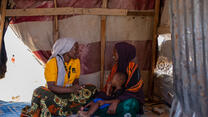Social networks exist wherever people are connected: within organizations, communities, between clients and service providers, within markets, and even within and between conflicting parties. Put simply, a social network is made up of a number of actors who are connected by some type of relationship. Social network analysis (SNA) is the process of mapping these relationships, and analyzing the structure of the network and the influence of different actors. The following handbook is designed to provide a step by step guide to the application of SNA for the IRC. It has been developed by the Context Adaptability initiative in close collaboration with the IRC teams in Sierra Leone and Myanmar and with valuable contributions from the IRC’s Technical Units. The approach draws on Social Network theory, discussion-based tools, such as Net-Map, and graphical software applications, such as Kumu.
Resource
Our efficiency
- 87% Program services
- 7% Management and general
- 6% Fundraising
Join our mailing list
Get the latest news about the IRC's innovative programs, compelling stories about our clients and how you can make a difference. Subscribe
International Rescue Committee is a 501(c)(3) not-for-profit organization. EIN number 13-5660870.
Copyright © International Rescue Committee, 2025.


